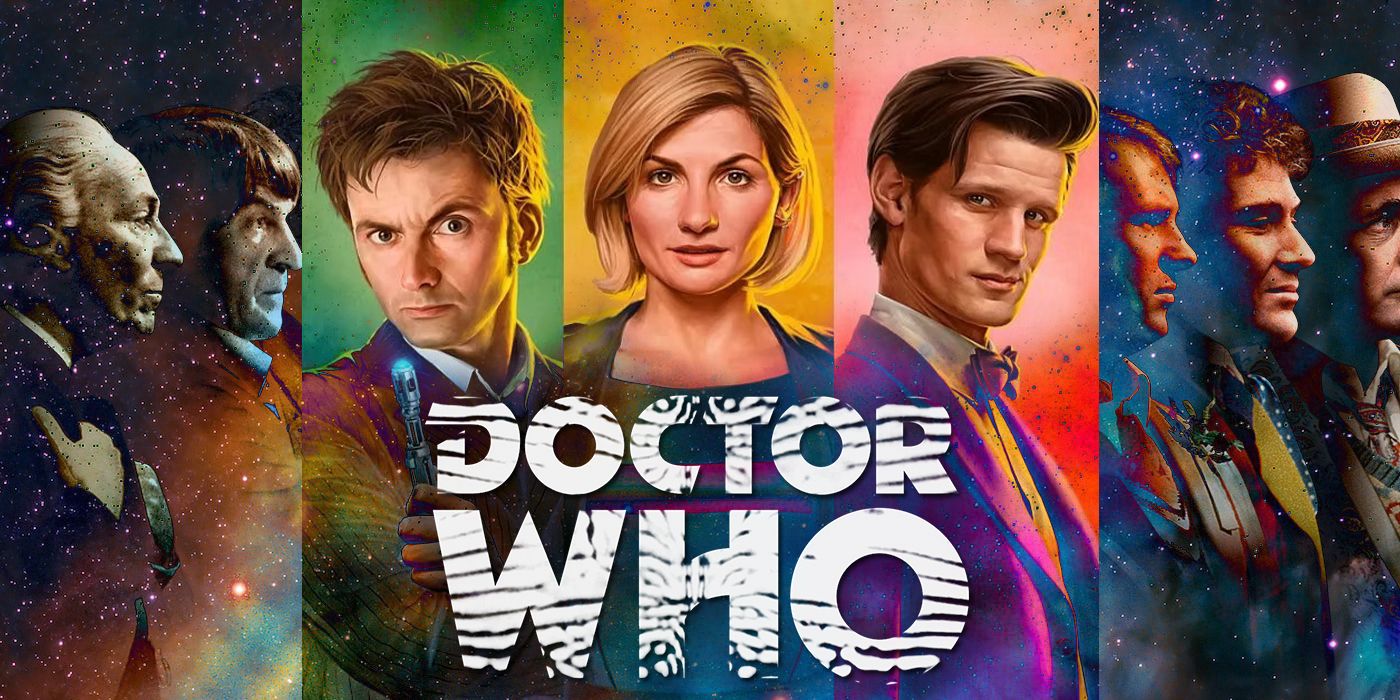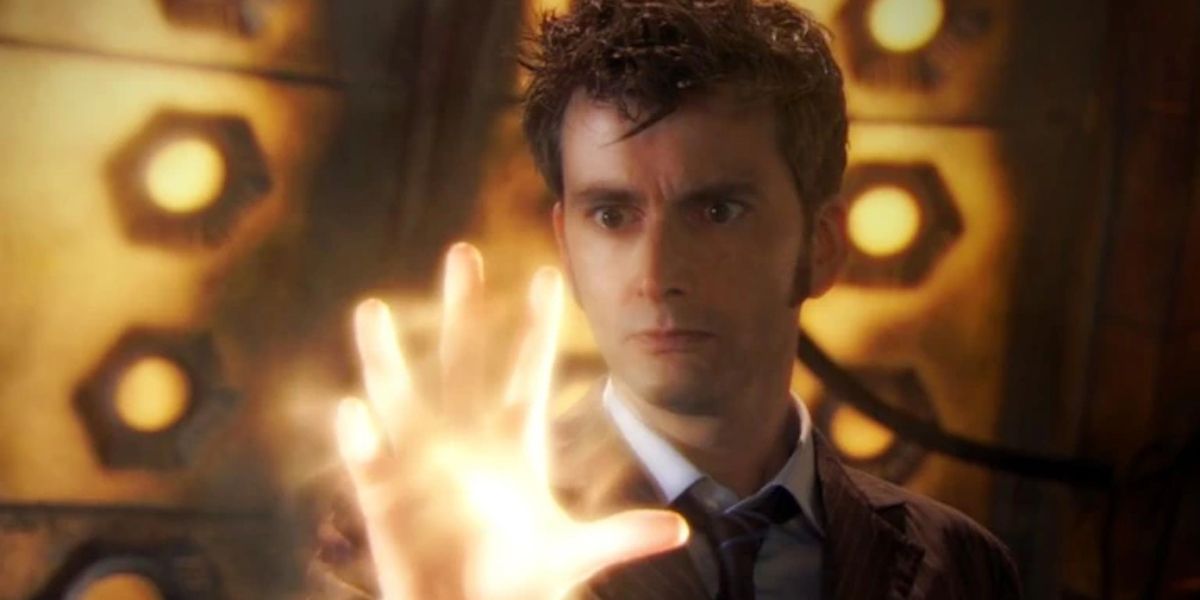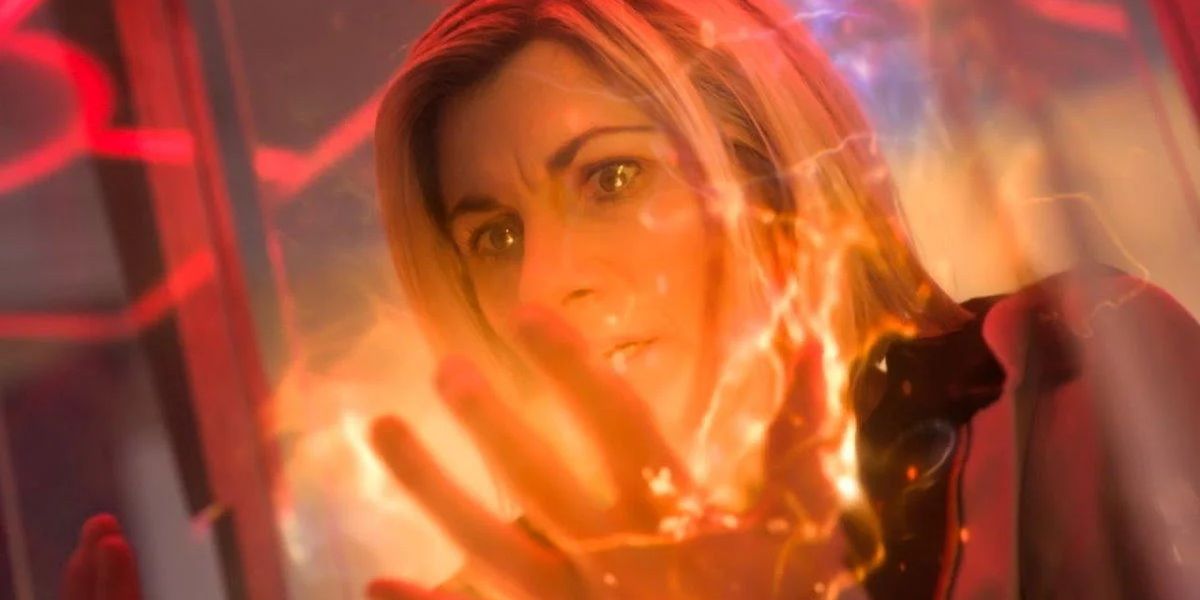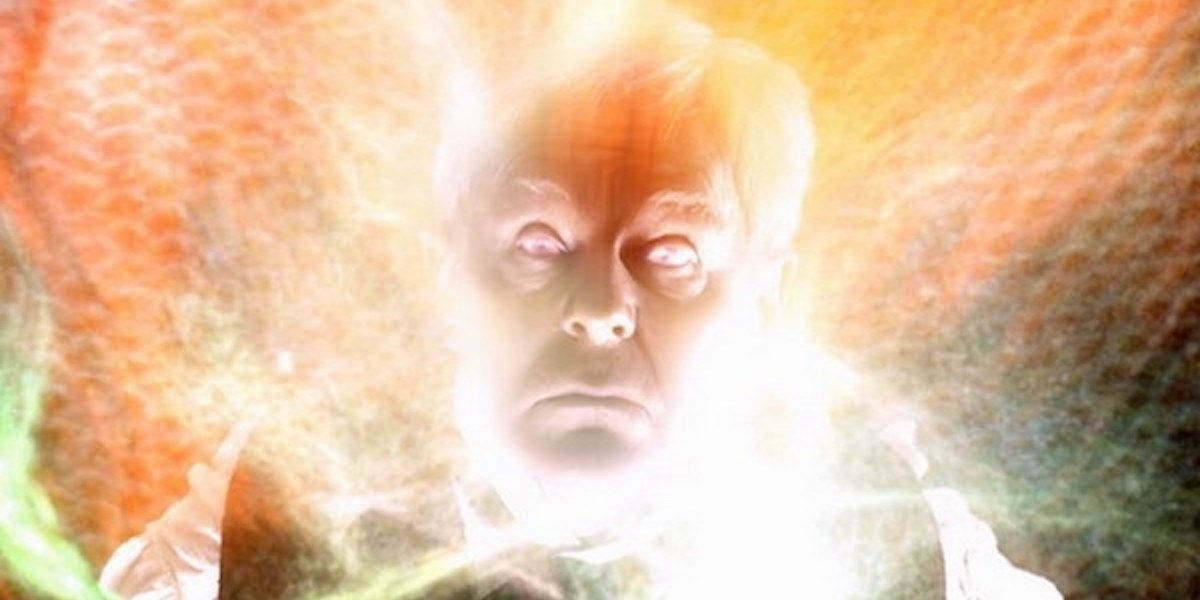After four years as the face of Doctor Who, Jodie Whittaker has left her post in the third 2022 special, “The Power of the Doctor”. But instead of Ncuti Gatwa’s fresh face, fans were surprised by the appearance of an old friend: beloved Tenth Doctor David Tennant. This marks the first time that the Doctor has turned into a previous incarnation of themself. But there’s nothing new about firsts when it comes to regenerations in Doctor Who. When the Doctor changes, nothing around them remains the same, and that includes the regeneration process itself. No one regeneration is like the other. Besides the regular changes in the aesthetics, showrunners always have the opportunity to bring something entirely new into the series’ lore.
In “The Power of the Doctor”, Chris Chibnall introduces us to the concept of using forced regeneration to turn the Doctor into another already existing person, in a semi-Freaky Friday kind of way, as well as to the degeneration that brought the Thirteenth Doctor back. It was also the first time the Doctor’s clothes changed during the regeneration. However, even with all those new elements, there is a lot of continuity in the way regeneration is presented throughout the various iterations of the Doctor. The process has a proud history that goes all the way back to 1966 - a history that we will now take a look at.
The Inception of the Time Lords’ Regeneration
The very first regeneration aired on October 29, 1966, at the end of the fourth and last episode of the Cybermen serial “The Tenth Planet”. Though the episode is now considered lost, the regeneration scene itself was edited into the 2017 Christmas special “Twice Upon a Time”, in which the Twelfth (Peter Capaldi) and the First Doctor (David Bradley) team up to solve the mystery of the Testimony ship. William Hartnell, who played the original First Doctor, had been dwindling in health over the course of his three years on Doctor Who, and this was starting to take a toll on his work. Conflicts between Hartnell and the production were also starting to become more regular. To keep the show going without its main actor, producer Innes Lloyd and script editor Gerry Davis came up with the idea for a sort of biological renewal process. The name regeneration wouldn’t come into existence until 1974, when Jon Pertwee’s Third Doctor turned into Tom Baker’s Fourth at the end of “Planet of the Spiders”.
Lore-wise, it’s a bit harder to determine the origins of regeneration as a part of Time Lord biology. Up until 2011, the TV series had never given an explanation for where the process came from - whether it was entirely organic or generated by some kind of nanotechnology implanted into Time Lords’ bodies. More dedicated fans that followed the Doctor Who books and audio adventures as well as the show had a few theories up their sleeve. The most accepted of them was that regeneration was created by Rassilon, one of the founders of the Time Lord civilization in Gallifrey. However, in the Season 6 episode “A Good Man Goes to War”, the Eleventh Doctor (Matt Smith) attributes the ability to regenerate to a long period of exposure to the Time Vortex. One version of the story doesn’t contradict the other: Rassilon’s eventually successful experiments might have had something to do with exposing young Time Lords to the Vortex. But the story was about to get a lot more complicated.
In the Season 12 finale, “The Timeless Children”, we learn that a pre-Time Lord citizen of Gallifrey called Tecteun (Seylan Baxter) discovered regeneration after repeatedly experimenting on an alien child that possessed the ability to renew its own body. Tecteun then spliced the regeneration code into herself and used it to create the basis for Time Lord society. Since experimenting on a defenseless kid isn’t exactly a savory myth of origin, the Time Lords came up with something more palatable to tell the future generations. As for the original Timeless Child, she became the adult that would later be known as the Doctor.
What Causes Regeneration and Can It Be Stopped?
What made regeneration so attractive to Tecteun (or Rassilon, depending on which origin story you subscribe to) was that it allowed whoever possessed the power to basically cheat death. Regeneration is a process of cellular renewal that takes place when a Time Lord is about to die. Death, as usual, can have many causes: the First Doctor died of old age, while the Ninth (Christopher Eccleston) sacrificed himself to save Rose Tyler (Billie Piper). Patrick Troughton’s Second Doctor was sentenced to forced regeneration for breaking Time Lord law, while the Eighth Doctor (Paul McGann) kickstarted his own transformation into the War Doctor (John Hurt) by drinking a special potion.
Though not exactly framed as suicide in the show, it is possible to say that the Eighth Doctor took his own life. That is because, depending on your point of view, regeneration can be considered a type of death, albeit a little kinder than the one earthlings in general are used to. After all, though the Time Lords retain the memories of their former selves, they lose not just their bodies, but also their personalities. A recently regenerated Time Lord doesn’t just have to get used to looking at themself in the mirror, they also have to find out what kind of person they are now. The process is also said to be considerably painful, with a 1966 production note comparing it to taking LSD and experiencing only the “hell and dank horror which can be its effect”.
Thus, it is no wonder that the Doctor is rarely excited to regenerate and often tries to delay the process as much as they can. In Season 4’s “Journey’s End”, the Tenth Doctor even managed to stop an already initiated regeneration process by shooting the concentrated energy into a biological compatible receptacle: his own severed hand. In the classic serial “The Keeper of Traken”, the Master (Geoffrey Beevers and Anthony Ainley) used the regenerative energy to heal his wounds slowly instead of changing his form. A Time Lord can also consciously refuse the influx of regenerative power as a whole, but this is perceived as a form of suicide. In the show, the most memorable case of a Time Lord killing themself by not regenerating is the Master’s (John Simm) death at the end of Season 3.
The Many Looks of the Regeneration Process
Nowadays, when fans of Doctor Who think of regeneration, what comes to mind is a body with its limbs and head enveloped by a bright, yellow light. The glow intensifies until the face that once was there is replaced by an entirely new one. But the aesthetics of the regeneration process have a history just as long and complex as that of the technology’s creation. In the Classic Era, every Doctor had their own regeneration style. When Sylvester McCoy’s Seventh Doctor gave way to McGann’s Eight, his face twisted and turned as if all the bones were being broken and put back into place while his body emitted bolts of lightning. The Fourth Doctor was basically possessed by a spirit of his future self, and the Second Doctor changed appearance in a delightfully trippy scene that had him cast into a void and surrounded by replicas of his face. But the bright light look doesn’t come from nowhere. Hartnell himself had an intense light shone on his face until the screen went almost entirely white. When the light’s intensity was reduced, it was Troughton that viewers saw on their TVs.
No matter how the process looks to those watching from the outside, it is widely agreed that, internally, all Doctors go through the same ordeal. Some hide it better beneath motivational speeches, but in the same 1966 production note mentioned above, it was stated that the Doctor “relives some of the most unendurable moments of his long life”. Thankfully, the Doctor also remembers some of their good times. It isn’t rare for their dearest companions to appear in the middle of the regeneration to say goodbye. What is rare, however, is for the Doctor’s clothes to change with them. Usually, a new Doctor always begins their life wearing their predecessor's attire, whether the outfit is a smart suit-and-tie or a jacket with a piece of celery on its lapel.
Who Else Has Regenerated on the Show?
It’s not just the Doctor that has to pick a new look after regenerating, trying out more or less cool accessories like 3D glasses and fez hats. In Season 3’s “Utopia”, when Yana (Derek Jacobi) regenerated into John Simm’s Master, his stuffy outfit remained untouched. The same happened to the General (Ken Bones and T’Nia Miller) in Season 9’s “Hell Bent”, though, in their case, there was no reason to get rid of the military armor.
The Doctor, the Master, and the General are only a few of the Time Lords we have seen change appearance over the course of Doctor Who’s nearly 60 years of history. Tecteun also regenerated many times, with three of her incarnations depicted on the show. Seylan Baxter was the first, while Jake Nwogu played Tecteun #2. In Season 13’s “Once, Upon a Time”, the Doctor meets a new version of the Time Lord she once called mother, played by Barbara Flynn. Rassilon also changed looks many times, having been played by Richard Matthews, in the classic series, Timothy Dalton, and Donald Sumpter, in the 2005 show. Another important Time Lord that regenerated during their time on the series was the Fourth Doctor's companion Romana, played initially by Mary Tamm and then by Lalla Ward.
But Time Lords aren’t the only ones that have regenerated on Doctor Who. Having been conceived inside the TARDIS, where she was exposed to the Vortex when she was still in the womb, River Song (Alex Kingston) regenerated as a child in Season 6’s “Day of the Moon” and then as young adult in “Let’s Kill Hitler”. In Season 4’s “The Doctor’s Daughter”, the Tenth Doctor unwillingly gives DNA for the creation of a clone soldier named Jenny (Georgia Tennant), who subsequently dies, but comes back to life due to her Time Lord heritage. However, since Jenny is only part Time Lord (or since she wasn’t exposed to the Vortex), her regeneration isn’t complete, and she manages to retain her appearance. The Tenth Doctor’s severed hand also regenerated into a whole new Tenth Doctor after being touched by Donna Noble. The process, dubbed metacrisis, happens when the DNA from both species mix, creating a Time Lord-human hybrid.
How Many Regenerations Does the Doctor Have?
It isn’t clear how many times non-Time Lords are allowed to regenerate. No one knows whether Jenny will ever bring herself back to life again, at least not from watching the show. But, to be fair, it isn’t clear how many times the Doctor is allowed to regenerate either, at least not nowadays. Originally, the Doctor had only 12 regenerations to spare. However, in the Battle of Trenzalore, the Eleventh Doctor is granted a new set of lives by the Time Lords. It isn’t said how many regenerations this new cycle has, but it is implied to be another set of 12.
And then along came “The Timeless Children” and changed everything once again. According to the episode, the Timeless Child had the ability to regenerate endlessly, but Tecteun decided to limit the Time Lords’ number of regenerations when sharing the child’s “gift” with them. Since the Timeless Child turned out to be the Doctor, it is pretty hard to say how many lives this madman in a box still has. In an episode of the Doctor Who spin-off The Sarah Jane Adventures, the Eleventh Doctor once joked that he could regenerate 507 times. Who knows? Perhaps he was telling the truth.




